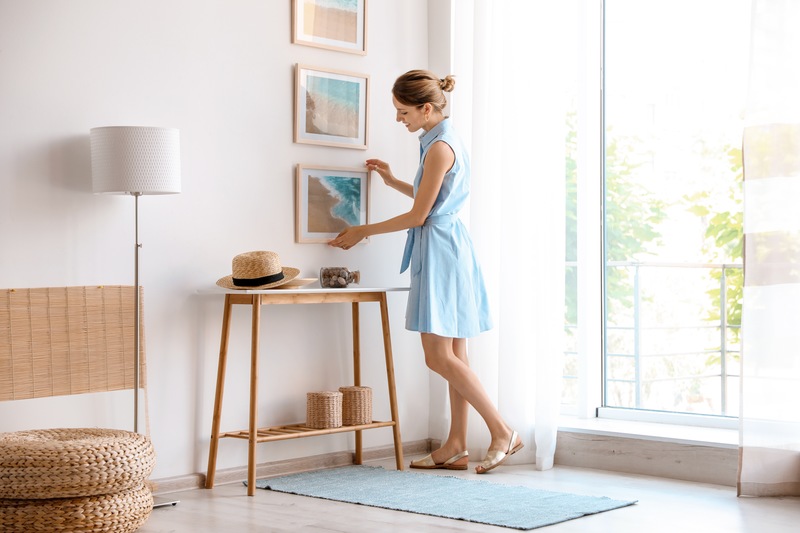
Looking to fill up blank white walls or an empty shelf to make Ormond Beach new homes feel a bit more like your own? Displaying a collection of artwork is such a creative, personal statement to make in any space. The art to which you’re drawn or that you choose to collect says a lot about yourself – it reflects your unique tastes and point of view (like a piece you immediately loved at a local art fair), what you consider sentimental or important (like a painting handed down from a childhood home or family member), or even your personal story and history (such as photography from any special time in your life). These pieces are important – so they should be displayed openly and with care to add beauty to your space! Read on for a few things you should know as you plan out how best to display artwork in your new home.
Start With Some Rules of Thumb
As you begin planning the work you’d like to include in your space, let’s consider some basics about how to hang artwork on a wall. These guidelines don’t have to be law – but understanding them is a good start to learn what works before you eventually choose to get creative and break the rules!
First, try hanging pieces with their center point at 60 inches above the ground. This is a gallery standard, as it works as an average eye level, allowing most viewers to fully see the piece without it being too high or low. If you choose to hang two or more pieces in a horizonal manner, you’ll want to align them both at this center point to stay cohesive. Two pieces aligned vertically is a bit more challenging – you’ll want to find the total height of the two pieces together, with 2 inches or so between them. Treat this as a single unit – then place their collective center point at 60 inches.
Learn a Measuring Tip for Wall Hanging
You may be wondering, “how can I make sure to hang the painting to get the center point at the perfect height?” When you approach the hanging process, start by taking some measurements. Grab your tape measure!
First, determine the vertical height of the art piece. Divide that height measurement in half. Then, add 60 inches – this will give you the measurement at which the top edge of the piece will rest when the center point is at eye level.
However, don’t hammer in the nail yet. Most paintings are hung with a wire or other mechanism at the back – so you’ll have to compensate for this distance. Hook your tape measure onto the wire and pull upwards until it is taut. Measure the distance to the top edge of the painting – then subtract this new number from the measurement you calculated previously. This new number will tell you exactly how high up from ground level to put your nail!
Experiment with Size and Shape
There’s so many unique ways to pair and even group artwork for your space – so why settle for one small piece in a space? Revitalize your decorating by playing with shape, organization, and scale. You might, for example, spice up a living room or entryway by including a dominant, grand piece of artwork to become a focal point on a wall space. Alternatively, if you don’t want to deal with the complications of transporting or hanging a large piece of artwork, you might consider creating a gallery wall! Utilize an assortment of different small pieces and play around with the arrangement on the floor until you’re happy – this larger grouping can serve the same function of a larger focal piece without the same difficulties!
Think Beyond Paintings
Hanging artwork isn’t all – don’t forget about all the potential of three-dimensional sculptural pieces! There’s plenty of good spots to place sculpture artwork that you love – like, for example, breaking up some space in a book shelf by placing pieces between rows or on top of book stacks. A vignette, or a grouping of smaller objects and art pieces, can be placed atop side tables, ledges, or other empty spots to spruce up your décor. These might include things like sculpture, photos or small framed art pieces, florals or plants, or anything you can find that looks visually appealing! If you’re looking to display larger sculptural works, however, there are other spots you might choose to consider – such as creating an entryway focal point or a dining table centerpiece, in place of more traditional florals or candles.
With all these tips in mind, you’ll be well on your way to fully appreciating the role of artwork in your home décor. Need more tips on design for your new home? Or, want to learn more about the process of constructing new homes in Palm Coast Florida? Vanacore Homes, your trusted Ormond Beach and Palm Coast home builders, can help! Contact us today to get started on the process of building your dream home.
Previous Article